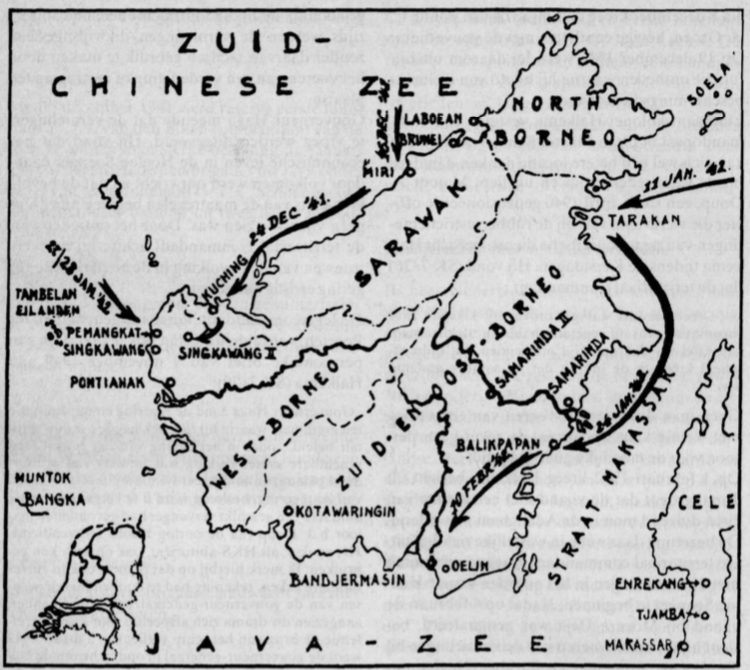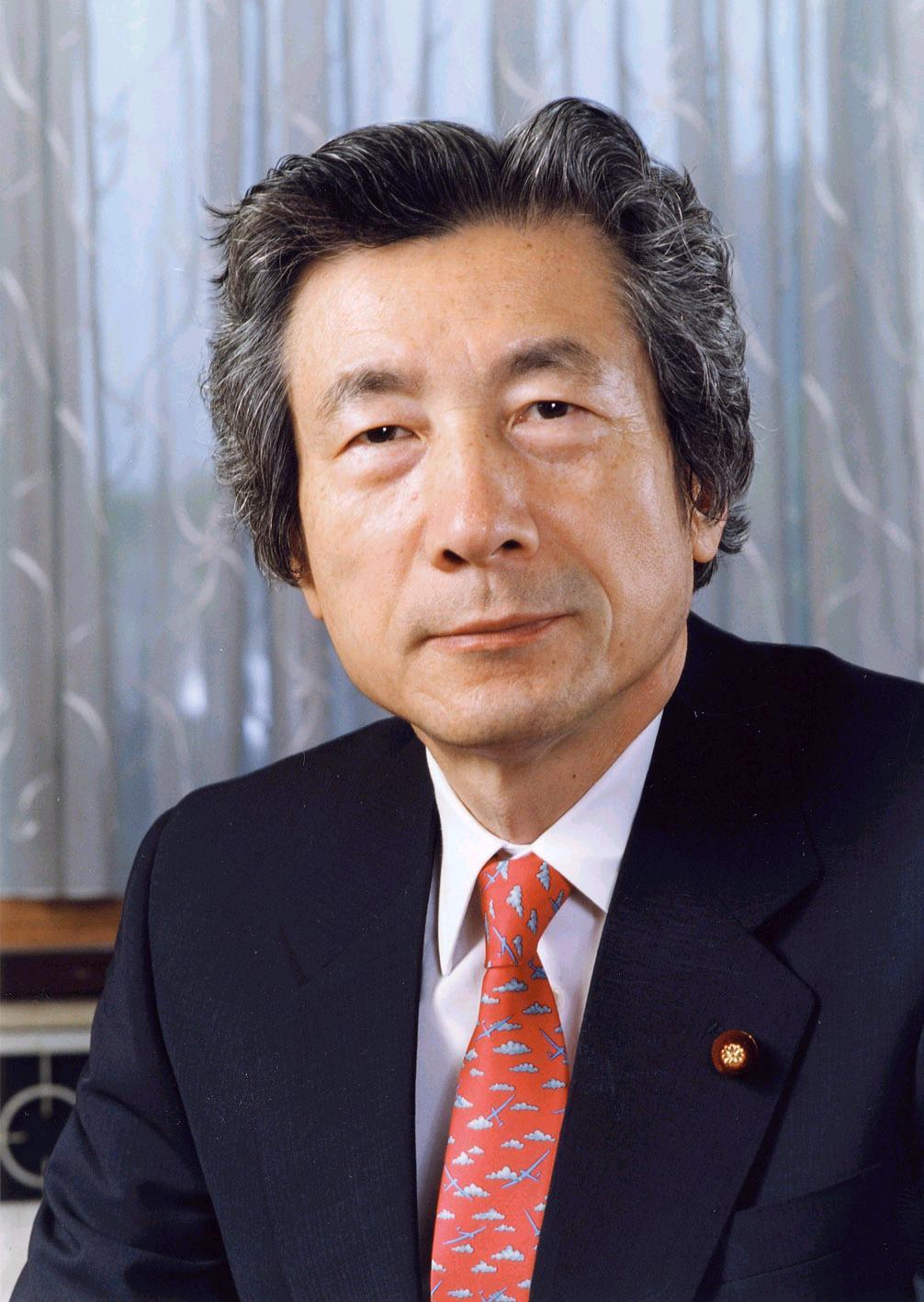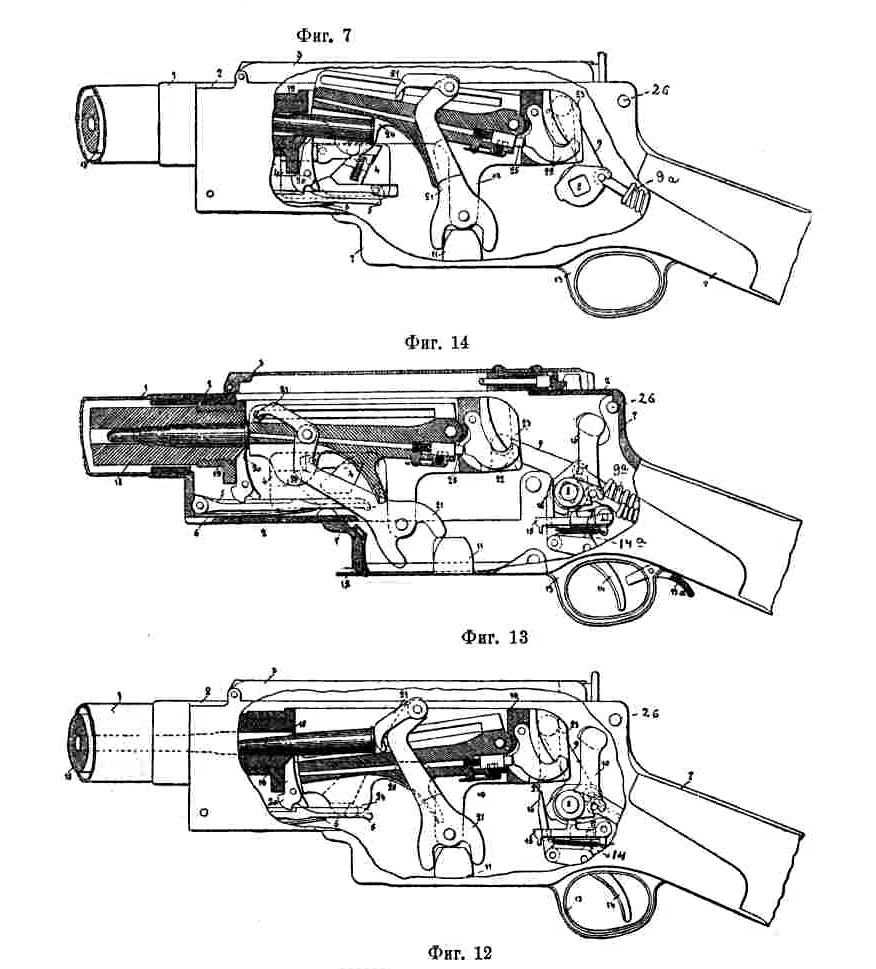|
Battle Of Banjarmasin
The Battle of Banjarmasin (31 January – 10 February 1942) took place as part of the Japanese offensive to capture the Dutch East Indies. The Japanese conducted a pincer attack from sea and land to capture a strategic airfield in Banjarmasin (old spelling: Bandjarmasin or Bandjermasin) in preparation for the capture of Java Island. Background Prior to 1941, Banjarmasin was the administrative centre for East and South-East Borneo, and seat of the governor of Dutch Borneo. Oelin (Ulin) Airfield that was located 25 kilometers outside the town ranged only 420 kilometers from Surabaya, making it a key target in the Japanese plan to destroy Allied air power in Java prior to their offensive. The Dutch established another airfield at Kotawaringin, 350 kilometers to the west. Order of Battle Japan Ground Forces * Land Drive Unit (Commander: Col. Kyōhei Yamamoto): ** 146th Infantry Regiment (minus 1st and 2nd Battalion) ** One artillery battery ** One engineer company (minus ... [...More Info...] [...Related Items...] OR: [Wikipedia] [Google] [Baidu] |
KNILM
Koninklijke Nederlandsch-Indische Luchtvaart Maatschappij (in English: Royal Dutch Indies Airways) was the airline of the former Dutch East Indies. Headquartered in Amsterdam, KNILM was ''not'' a subsidiary of the better-known KLM (Royal Dutch Airlines), despite the similar name. The airline had its headquarters in Amsterdam and an office in on the grounds of Tjililitan Airfield (current Halim Perdanakusuma International Airport) in Batavia (current Jakarta). . KNILM. Retrieved on 22 August 2014. "Hoofdkantoor en agentschappen AMSTERDAM Hoofdkantoor, N. Spiegelstraat 5 ..ATAVIA Hoofdkantoor voor Indië, ... [...More Info...] [...Related Items...] OR: [Wikipedia] [Google] [Baidu] |
Mitsubishi A6M Zero
The Mitsubishi A6M "Zero" is a long-range carrier-based aircraft, carrier-based fighter aircraft formerly manufactured by Mitsubishi Aircraft Company, a part of Mitsubishi Heavy Industries, and was operated by the Imperial Japanese Navy from 1940 to 1945. The A6M was designated as the , or the Mitsubishi A6M Rei-sen. The A6M was usually referred to by its pilots as the ''Reisen'' (, zero fighter), "0" being the last digit of the Japanese calendar#Years, imperial year 2600 (1940) when it entered service with the Imperial Navy. The official World War II Allied names for Japanese aircraft, Allied reporting name was "Zeke", although the name "Zero" (from Type 0) was used colloquially as well. The Zero is considered to have been the most capable carrier-based aircraft, carrier-based fighter in the world when it was introduced early in World War II, combining excellent maneuverability and very long range.Hawks, Chuck"The Best Fighter Planes of World War II" chuckhawks.com. Retrieved: ... [...More Info...] [...Related Items...] OR: [Wikipedia] [Google] [Baidu] |
1942 In Japan
Events in the year 1942 in Japan. Incumbents *Emperor: Hirohito *Prime Minister: Hideki Tōjō Governors *Aichi Prefecture: Yukisawa Chiyoji *Akita Prefecture: Fumi *Aomori Prefecture: Seiichi Ueda (until 9 June); Shunsuke Yamada (starting 9 June) *Ehime Prefecture: Masatomi Hatakeda (until 7 July); Ryuichi Fukumoto (starting 7 July) *Fukui Prefecture: ** until 9 January: Kubota ** 9 January-15 June: Shigeo Miyoshi ** starting 15 June: Nagano Wakamatsu *Fukushima Prefecture: Sumio Hisakawa (until 7 July); Yoshio Araki (starting 7 July) *Gifu Prefecture: Tetsushin Sudo (until 23 May); Miyoshi Shigeo (starting 23 May) *Gunma Prefecture: Goro Murata *Hiroshima Prefecture: Tokiji Yoshinaga (until 15 June); Saiichiro Miyamura (starting 15 June) *Ibaraki Prefecture: Kanichi Naito (until 7 October); Tsujiyama (starting 7 October) *Iwate Prefecture: Yoshifumi Yamauchi (until 15 June); Osamuzo Suzuki (starting 15 June) *Kagawa Prefecture: Osamu Eianhyaku (until 9 January) ... [...More Info...] [...Related Items...] OR: [Wikipedia] [Google] [Baidu] |
1942 In The Dutch East Indies
Year 194 ( CXCIV) was a common year starting on Tuesday (link will display the full calendar) of the Julian calendar. At the time, it was known as the Year of the Consulship of Septimius and Septimius (or, less frequently, year 947 ''Ab urbe condita''). The denomination 194 for this year has been used since the early medieval period, when the Anno Domini calendar era became the prevalent method in Europe for naming years. Events By place Roman Empire * Emperor Septimius Severus and Decimus Clodius Septimius Albinus Caesar become Roman Consuls. * Battle of Issus: Septimius Severus marches with his army (12 legions) to Cilicia, and defeats Pescennius Niger, Roman governor of Syria. Pescennius retreats to Antioch, and is executed by Severus' troops. * Septimius Severus besieges Byzantium (194–196); the city walls suffer extensive damage. Asia * Battle of Yan Province: Warlords Cao Cao and Lü Bu fight for control over Yan Province; the battle lasts for over 100 days ... [...More Info...] [...Related Items...] OR: [Wikipedia] [Google] [Baidu] |
Battles Of World War II Involving Japan
A battle is an occurrence of combat in warfare between opposing military units of any number or size. A war usually consists of multiple battles. In general, a battle is a military engagement that is well defined in duration, area, and force commitment. An engagement with only limited commitment between the forces and without decisive results is sometimes called a skirmish. The word "battle" can also be used infrequently to refer to an entire operational campaign, although this usage greatly diverges from its conventional or customary meaning. Generally, the word "battle" is used for such campaigns if referring to a protracted combat encounter in which either one or both of the combatants had the same methods, resources, and strategic objectives throughout the encounter. Some prominent examples of this would be the Battle of the Atlantic, Battle of Britain, and Battle of Stalingrad, all in World War II. Wars and military campaigns are guided by military strategy, whereas ... [...More Info...] [...Related Items...] OR: [Wikipedia] [Google] [Baidu] |
Battles And Operations Of World War II Involving The Netherlands
A battle is an occurrence of combat in warfare between opposing military units of any number or size. A war usually consists of multiple battles. In general, a battle is a military engagement that is well defined in duration, area, and force commitment. An engagement with only limited commitment between the forces and without decisive results is sometimes called a skirmish. The word "battle" can also be used infrequently to refer to an entire operational campaign, although this usage greatly diverges from its conventional or customary meaning. Generally, the word "battle" is used for such campaigns if referring to a protracted combat encounter in which either one or both of the combatants had the same methods, resources, and strategic objectives throughout the encounter. Some prominent examples of this would be the Battle of the Atlantic, Battle of Britain, and Battle of Stalingrad, all in World War II. Wars and military campaigns are guided by military strategy, whereas bat ... [...More Info...] [...Related Items...] OR: [Wikipedia] [Google] [Baidu] |
Japanese Occupation Of The Dutch East Indies
The Empire of Japan occupied the Dutch East Indies (now Indonesia) during World War II from March 1942 until after the end of the war in September 1945. It was one of the most crucial and important periods in modern Indonesian history. In May 1940, Germany occupied the Netherlands, and martial law was declared in the Dutch East Indies. Following the failure of negotiations between the Dutch authorities and the Japanese, Japanese assets in the archipelago were frozen. The Dutch declared war on Japan following the 7 December 1941 Attack on Pearl Harbor. The Japanese invasion of the Dutch East Indies began on 10 January 1942, and the Imperial Japanese Army overran the entire colony in less than three months. The Dutch surrendered on 8 March. Initially, most Indonesians welcomed the Japanese as liberators from their Dutch colonial masters. The sentiment changed, however, as between 4 and 10 million Indonesians were recruited as forced labourers ('' romusha'') on economic deve ... [...More Info...] [...Related Items...] OR: [Wikipedia] [Google] [Baidu] |
The Kingdom Of The Netherlands During World War II
''The Kingdom of the Netherlands During World War II'' ( nl, Het Koninkrijk der Nederlanden in de Tweede Wereldoorlog) is the standard reference on the history of the Netherlands during World War II. The series was written by Loe de Jong (1914–2005), director of the Dutch Institute for War Documentation (''Nederlands Instituut voor Oorlogsdocumentatie'', or NIOD), and was published between 1969 and 1991. The series contains 14 volumes, published in 29 parts. De Jong was commissioned to write the work in 1955 by the Ministry of Education, Culture and Science. The first volume appeared in 1969, and de Jong wrote his last (volume 13) in 1988. The final volume, containing critique and responses, appeared in 1991. Publication history Loe de Jong was commissioned to write ''The Kingdom of the Netherlands During World War II'' by the Ministry of Education and Sciences, the predecessor of the current Ministry of Education, Culture and Science. The series was to be completed in 15 ... [...More Info...] [...Related Items...] OR: [Wikipedia] [Google] [Baidu] |
7th Division (Australia)
The 7th Division was an infantry Division (military), division of the Australian Army. It was formed in February 1940 to serve in World War II, as part of the Second Australian Imperial Force (2nd AIF). The division was raised on the British establishment of nine infantry battalions per division and consisted of two new brigades and three of the original 12 battalions of the 6th Division (Australia), 6th Division forming the third brigade. The division is sometimes known by the nickname "The Silent Seventh", due to a perception that its achievements were unrecognised, in comparison to the other Australian divisions. The origin of this belief appears to be censorship of the part played by the 7th Division in the fierce fighting in the 1941 Syria-Lebanon campaign.James 2017 The 7th Division along with the 6th and 9th Division (Australia), 9th Australian Divisions were the only divisions to serve in both the Middle East and the South West Pacific Area. It was disbanded in 1946, follo ... [...More Info...] [...Related Items...] OR: [Wikipedia] [Google] [Baidu] |
2/31st Battalion (Australia)
The 2/31st Battalion was an infantry battalion of the Australian Army that served during World War II. It was raised in June 1940 and was assigned to the 25th Brigade, 7th Division. It initially served in the United Kingdom where it undertook defensive duties before being moved to the Middle East in 1941. After taking part in the fighting in Syria and Lebanon, the battalion undertook garrison duties around Tripoli before being transferred back to Australia in 1942. In late 1942 the battalion was sent to New Guinea to fight against the Japanese along the Kokoda Track. They subsequently fought a number of battles throughout 1942, 1943 and early 1944. Their last campaign came in mid-1945 when they landed on Borneo. After the war the battalion was disbanded in March 1946. History Formation The battalion was formed in the United Kingdom on 27 June 1940 from Second Australian Imperial Force (2nd AIF) personnel that had originally been designated for service in non-infantry rol ... [...More Info...] [...Related Items...] OR: [Wikipedia] [Google] [Baidu] |
Dutch Troops Undergoing Inspection In Tanahgrogot, Sometime In The 1940s
Dutch commonly refers to: * Something of, from, or related to the Netherlands * Dutch people () * Dutch language () Dutch may also refer to: Places * Dutch, West Virginia, a community in the United States * Pennsylvania Dutch Country People Ethnic groups * Germanic peoples, the original meaning of the term ''Dutch'' in English ** Pennsylvania Dutch, a group of early Germanic immigrants to Pennsylvania *Dutch people, the Germanic group native to the Netherlands Specific people * Dutch (nickname), a list of people * Johnny Dutch (born 1989), American hurdler * Dutch Schultz (1902–1935), American mobster born Arthur Simon Flegenheimer * Dutch Mantel, ring name of American retired professional wrestler Wayne Maurice Keown (born 1949) * Dutch Savage, ring name of professional wrestler and promoter Frank Stewart (1935–2013) Arts, entertainment, and media Fictional characters * Dutch (''Black Lagoon''), an African-American character from the Japanese manga and anime ''Black L ... [...More Info...] [...Related Items...] OR: [Wikipedia] [Google] [Baidu] |
Madsen Machine Gun
The Madsen is a light machine gun that Julius A. Rasmussen and Theodor Schouboe designed and proposed for adoption by Colonel Vilhelm Herman Oluf Madsen, the Danish Minister of War, and that the Royal Danish Army adopted in 1902. It was the world's first true light machine gun produced in quantity and Madsen was able to sell it in 12 calibres to over 34 countries. The gun saw extensive combat usage for over 100 years, with continued use in limited quantities worldwide into the 2010s. The Madsen was produced by Compagnie Madsen A/S (later operating as Dansk Rekyl Riffel Syndikat A/S and then Dansk Industri Syndikat A/S). Design details The design dates to 1880s, with the Danish Self Loading rifle M.1888 (; ), being a precursor design. In 1883 Captain Vilhelm Herman Oluf Madsen (a Danish artillery officer), and Rustmester Rasmussen (a weapons technician at the Danish Arsenal), began working on a recoil-operated self-loading rifle; Madsen developed the idea and Rasmussen fabri ... [...More Info...] [...Related Items...] OR: [Wikipedia] [Google] [Baidu] |

_Borneo_TMnr_10014089.jpg)





